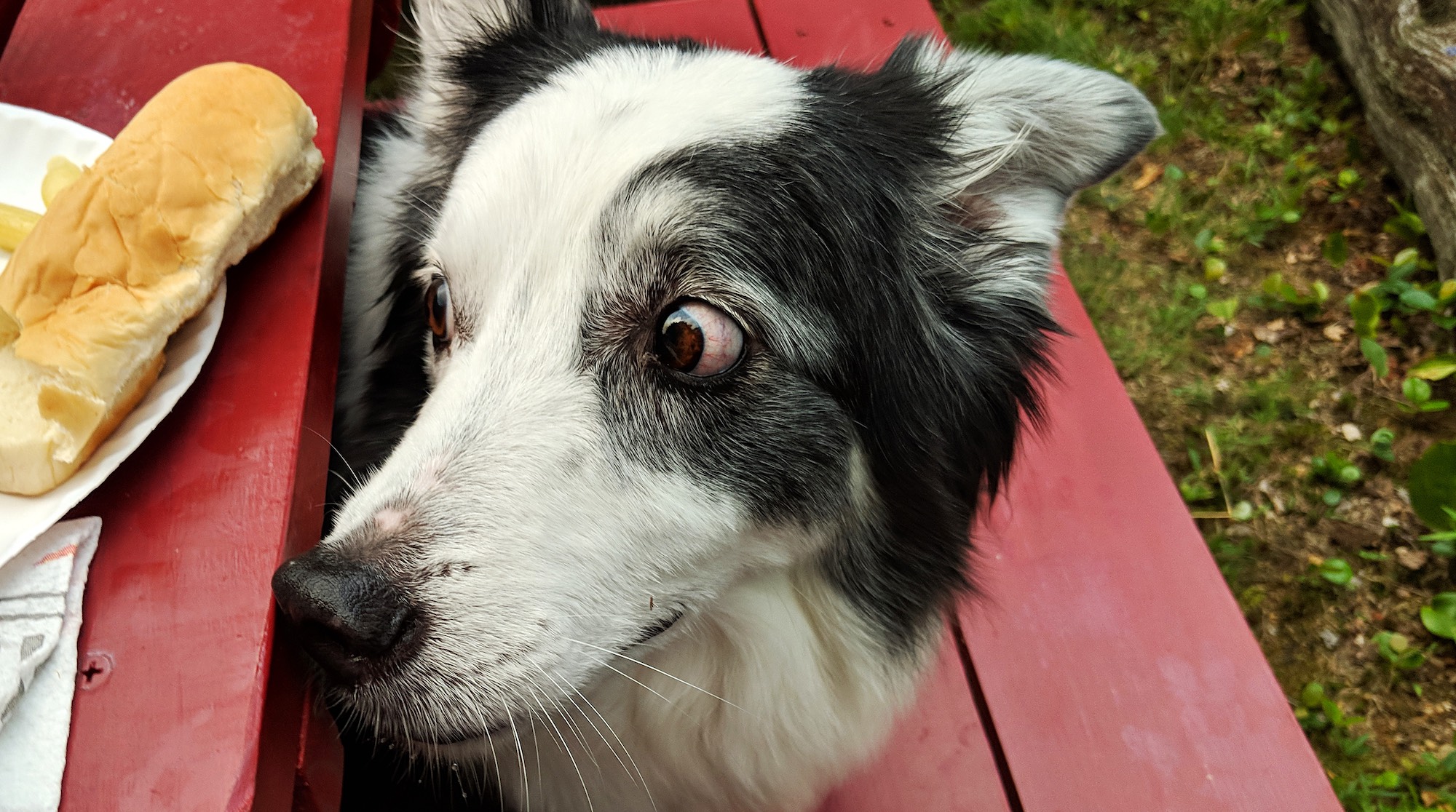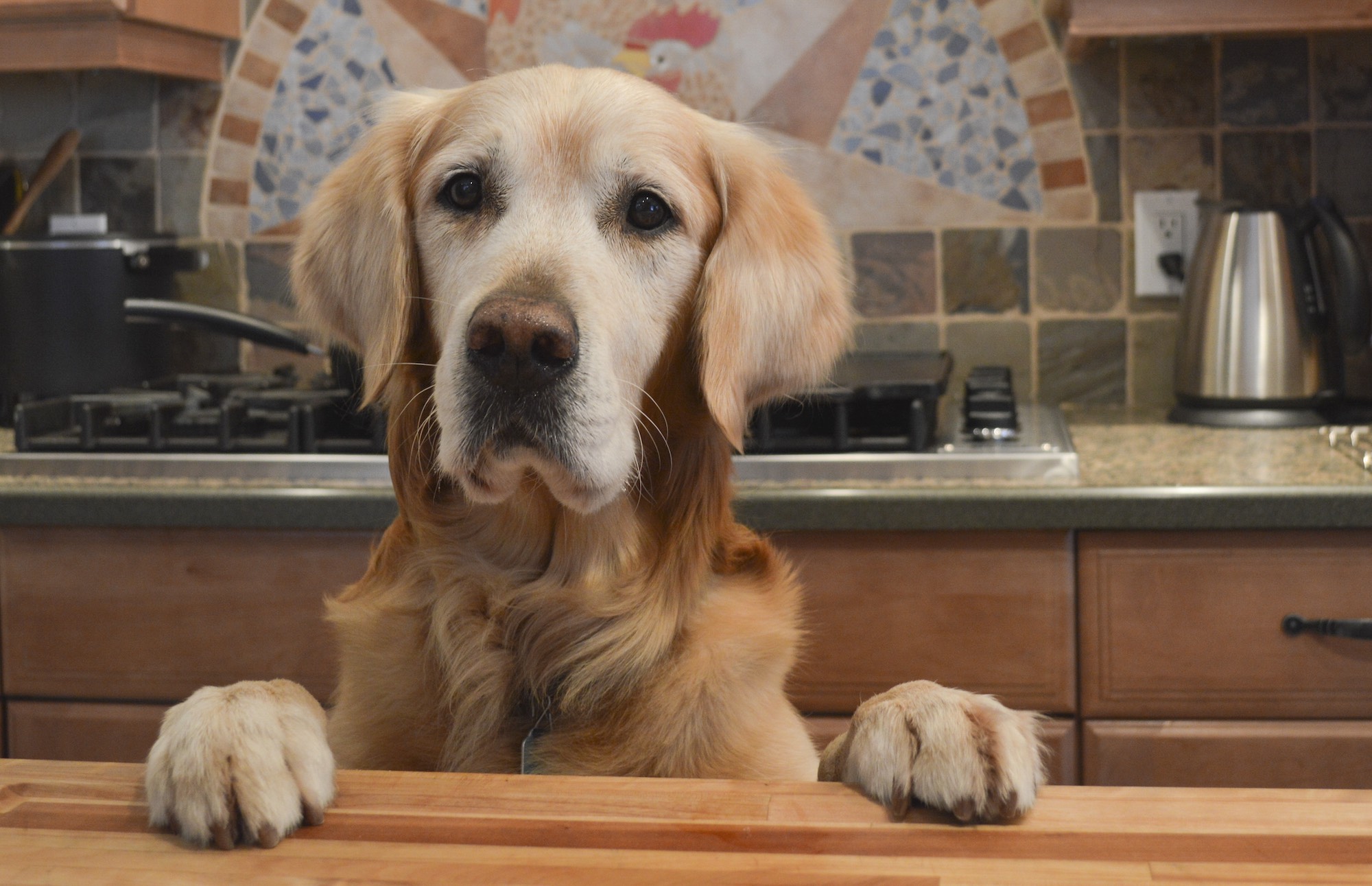When your dog feels like a member of the family, it’s hard not to share everything with them, including food. Who among us hasn’t been preparing dinner and shared a taste with a dog underfoot—or perhaps after dinner, you put your plate down for your dog to lick.
While sharing food is an understandable habit—after all, who can resist those eyes?—it can lead to bad behaviors like begging and counter surfing or stealing food. It can also upset the nutritional balance provided by your dog’s food, and can lead to weight gain, which has major health implications for dogs. If your dog is a counter surfing mercenary or demands a piece of the pie by snorting, pawing, or whining, you may think it’s too late to undo their bad habits, but that’s not the case.
Here’s how to prevent a dog from coveting or stealing your food, or addressing an existing food-filching habit.
Why does my dog beg for and steal food?
Despite the fact that we’ve been coexisting with canines for upwards of 20,000 years, dogs still have strong drives when it comes to things like food. It’s the reason your dog might dive for a piece of tasty garbage when you’re on a walk—instinct may be telling them food is is a scarce or prized commodity, so they need to grab what they can.
So when they see food and beg, by either pawing, vocalizing, or some other attention-grabbing behavior, and you reward them with said food, that creates a connection in their brain between the behavior and earning food. Counter surfing is especially self-rewarding, since it’s self-regulated and often leads to a tasty treat.
You can prevent both begging and stealing though by following these steps.
Don’t make your food easily accessible
One of the easiest ways to prevent your dog from stealing food is by making sure it’s not accessible. No temptation, no bad behavior. Clear your counters, don’t leave food on the dining room table (or anywhere else you might eat), and don’t store any food (like dry goods) on the floor or any place your dog has easy access to.
This will start teaching your dog that counter surfing won’t produce results. But this is a band aid of sorts while you retrain their behavior.
Don’t share your food—no matter what
Maybe you sneak a piece of carrot to your dog while prepping a meal, or you put your plate on the floor after dinner is over. These are little things that you hope don’t affect your dog’s behavior. But the foundation of stopping begging and stealing behavior is showing your dog that your food is not their food, no matter what.
If you do want to give them something off your plate, avoid doing it right away or anywhere you eat or prepare food, and instead create a designated food space for them.
Give your dog meals and treats in a designated area using designated equipment
One of the most important rules to prevent begging and stealing: create a designated space for your dog’s food. It’s best if your dog’s food bowl is in a separate area from where you prep or eat food so they don’t associate your food space with theirs. Further, only give them treats and meals in this area, using their bowls.
That means no licking your plates and only ever letting your dog eat their meals and treats from their own bowl. It might be easy to just hand them a treat from where you’re standing, but make it a habit to take them to their own area. The goal here is to teach them that food only appears in a specific area and in a specific receptacle, so when they see you take out bowls or plates, they don’t start thinking, “it’s time for me to eat!”
To take this one step further, you can teach them a command such as “go to place” wherein they go to their designated space. Every time they go to their spot, you can reward them with treats and/or praise. This will in turn start to teach them that “place” or “mat” (or wherever their designated eating spot is) is where rewards (food!) happen, and nowhere else.
Practice “leave it” and reward resisting
We’ve said it before, and we’ll say it again: “leave it” is one of the most important and versatile commands in your arsenal. Follow our instructions to teach your dog to “leave it” and start using it whenever you see them eyeing your food.
Further, when you sit down to a meal, teach your dog to stay in a certain place (whether on a bed, or just simply lying down), and every time they do this unprompted, reward them with praise.This will teach them that staying away from you while you eat is a positive experience.
Redirect when they start sniffing around counters and other food areas
Counter surfing often happens when we’re not around. But when you do catch your dog engaging in this behavior, redirect it. Every time you see your dog sniffing at the kitchen counters, about to jump up (or even if you catch them while they’re up on their hind legs!) redirect the behavior. Call them over with your “come” command and tell them to sit. Then praise them. You want to teach them that it’s more rewarding to stay on the ground, away from the counters than it is for them to go scavenging.
Consistency is key
We know, we know. Sometimes a dog is just so dang cute, and what’s the harm in sneaking them just a tiny piece of chicken (or whatever it is that you’re enjoying)? And doesn’t it seem kind of cruel to eat in front of them? But the fact of the matter is that dogs are creatures of habit, and it will confuse them (and even prolong or prevent successful training) if you break your own rules sometimes. It will teach them that it’s worth the gamble to break the rules, whether begging or counter surfing.
With these tips, your dog should be a polite canine companion willing to wait their turn for food. If the problem persists, or you’re feeling your progress is slow, don’t hesitate to connect with a trusted trainer who can help break through barriers and make the message stick.
The post How to Prevent a Dog From Coveting or Stealing Your Food appeared first on The Farmer's Dog.


Comments
Post a Comment